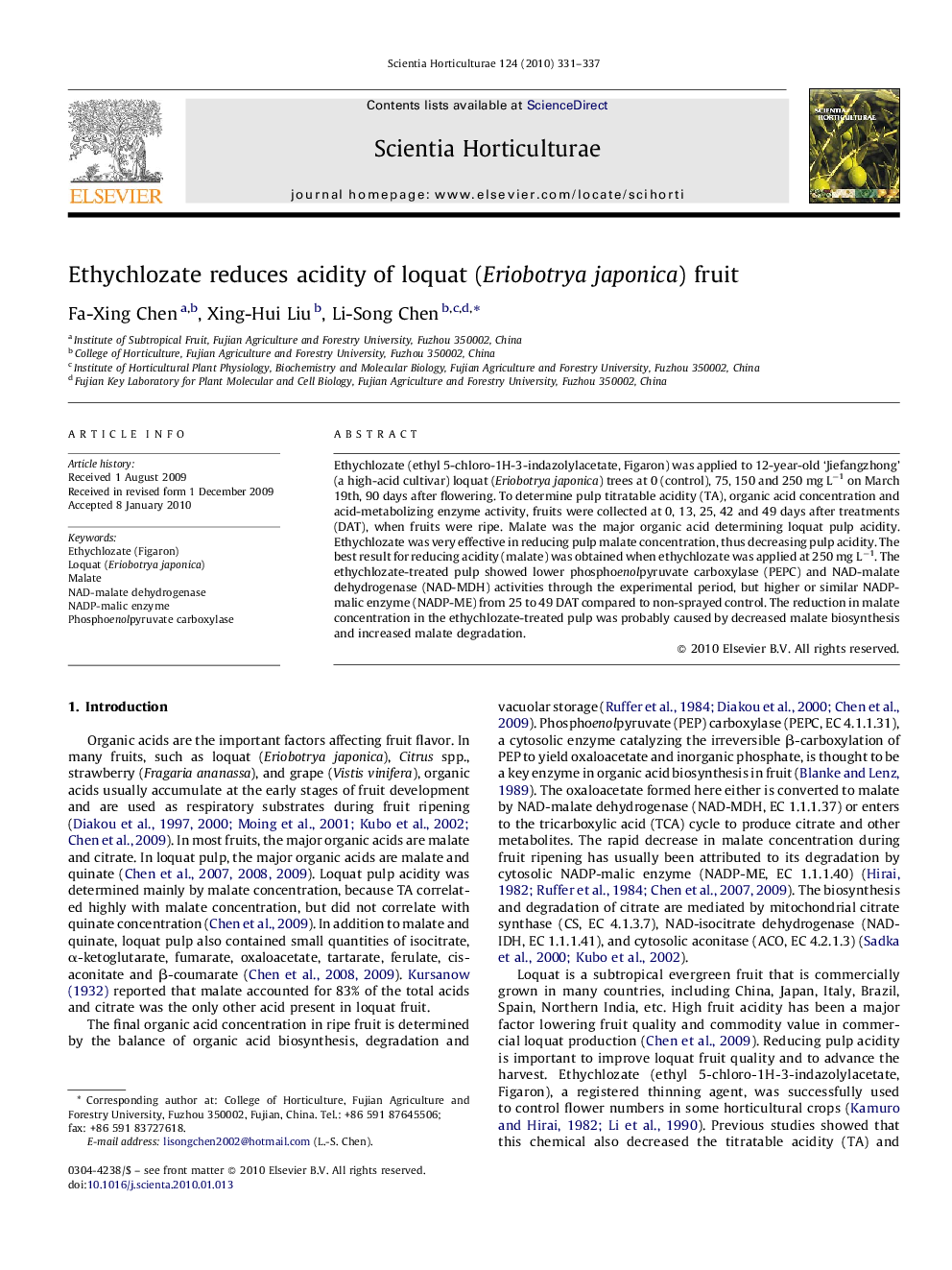| Article ID | Journal | Published Year | Pages | File Type |
|---|---|---|---|---|
| 4568833 | Scientia Horticulturae | 2010 | 7 Pages |
Abstract
Ethychlozate (ethyl 5-chloro-1H-3-indazolylacetate, Figaron) was applied to 12-year-old 'Jiefangzhong' (a high-acid cultivar) loquat (Eriobotrya japonica) trees at 0 (control), 75, 150 and 250 mg Lâ1 on March 19th, 90 days after flowering. To determine pulp titratable acidity (TA), organic acid concentration and acid-metabolizing enzyme activity, fruits were collected at 0, 13, 25, 42 and 49 days after treatments (DAT), when fruits were ripe. Malate was the major organic acid determining loquat pulp acidity. Ethychlozate was very effective in reducing pulp malate concentration, thus decreasing pulp acidity. The best result for reducing acidity (malate) was obtained when ethychlozate was applied at 250 mg Lâ1. The ethychlozate-treated pulp showed lower phosphoenolpyruvate carboxylase (PEPC) and NAD-malate dehydrogenase (NAD-MDH) activities through the experimental period, but higher or similar NADP-malic enzyme (NADP-ME) from 25 to 49 DAT compared to non-sprayed control. The reduction in malate concentration in the ethychlozate-treated pulp was probably caused by decreased malate biosynthesis and increased malate degradation.
Related Topics
Life Sciences
Agricultural and Biological Sciences
Horticulture
Authors
Fa-Xing Chen, Xing-Hui Liu, Li-Song Chen,
